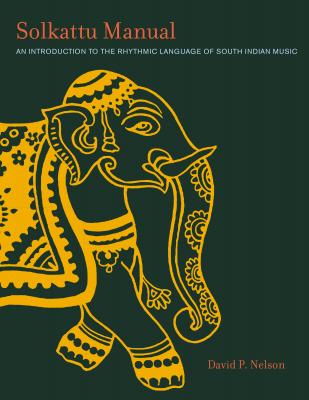ТОП просматриваемых книг сайта:
Solkattu Manual. David P. Nelson
Читать онлайн.Название Solkattu Manual
Год выпуска 0
isbn 9780819574480
Автор произведения David P. Nelson
Жанр История
Издательство Ingram
Part II: Exercise Mōrās
CHAPTER 5
These mōrās should be learned and mastered one at a time. I use an exercise mōrā at the beginning of each class session as a kind of tune-up; first the group performs it together, then each student performs it in turn. Once everybody has a good command of a particular exercise mōrā, we go on to the next one. I recommend doing all four versions of exercise mōrā 1 before going on to the others. Do only the mōrās that can be handled comfortably; there is no reason to do them all. On the other hand, if the group breezes through them, feel free to make up variations.
Part III: Ādi Tāḷa Lessons
Chapters 6–12
I strongly recommend that all members of the class or group work through all of the versions and variations of each mōrā, kōrvai, and koraippu pattern in this part of the book. This will reinforce the important point that the material is extremely flexible and can appear in any of the forms presented. Naturally, when it comes to performing the full composition, parts and variations will be assigned and practiced, and the performance order will be set. But this should be delayed as long as possible. In addition to the video examples of each lesson, chapter 12, “Putting It All Together,” provides three examples of performance pieces for groups of varying sizes. Feel free to experiment.
Pronunciation
Two different types of pronunciation guide are used in this book. The first concerns Sanskrit and Tamil words; the second, the solkaṭṭu syllables. This pronunciation guide applies to the former—pronunciation of the syllables will be handled on a case-by-case basis throughout the text:
vowels may be short—a (opera, cinema), e (pet), i (tip), o (porch), u (put)—or long—ā (blah), ē (say), ī (tee), ō (blow), ū (tool)
consonants t and d are dental, pronounced with the tongue flat against the top teeth
consonants with dots underneath, ḍ, ṭ, ḷ, ṇ, are retroflex, pronounced with the tip of the tongue curled against the roof of the mouth, as if a liquid “r” preceded them: bird, curt, snarling, corn
ś sounds like flash, s sounds like dust, not music
r is like the single Spanish r, in which the tongue bounces once off the roof of the mouth, not like the liquid American row
j and g sound like jog
c sounds like church
Accents in Sanskrit and Tamil words are functions of long and short syllables. If all the vowels in a word are short, the syllables are pronounced with equal weight, for example sol-kaṭ-ṭu, not SOL-kaṭ-ṭu or sol-KAṬ-ṭu. A long vowel in a word generates an accent, for example TĀ-ḷa, san-KĪR-ṇa. Most of the non-English words in this text can be sounded out using this scheme. One exception is the Sanskrit caturaśra, which most Tamil-speaking Karnatak musicians pronounce as cha-TOOSH-ra or cha-TOOS-ra. The following glossary includes approximate pronunciations and definitions for the non-English terms used in this introduction.
GLOSSARY
aḍavu (ah-dah-voo): A basic movement pattern in bharata nāṭyam.
ādi tāḷa (AH-dee TAH-la): The predominant tāḷa in Karnatak music. Its eight beats are counted with a four-beat laghu and two drutams (clap and wave).
bharata nāṭyam (ba-ra-ta NOT-yum): South India’s classical dance.
caturaśra jāti (cha-TOOSH-ra JAH-tee): The family of four-beat rhythms. Also, when referring to the laghu, four beats.
ēka tāḷa (ACHE-a TAH-la): A tāḷa made up of a single clap and finger counts (laghu).
Hindustani (hin-du-STAH-nee): The classical music of North India.
jati (jetty): Patterns of hand and foot movements in bharata nāṭyam.
kaṇakku (kah-na-kuh): “Calculation.” Rhythmic figures that create tension within the tāḷa they are designed to fit.
Karnatak (kar-NAH-tuck): The classical music of South India.
khaṇḍa cāpu tāḷa (con-da CHA-poo TAH-la): A five-beat tāḷa counted with claps on the first, third, and fourth beats.
konakkol (koe-nock-coal): Solkaṭṭu performed in a concert setting.
koraippu (ko-rye-pooh): “Reduction.” A section of the tani āvartanam in which drummers trade progressively shorter groups of phrases.
kōrvai (CORE-way): A complex rhythmic design, ending with a mōrā.
laghu (la-goo): A tāḷa component, comprising a clap and finger counts.
meter: A regular arrangement of musical time.
miśra cāpu tāḷa (mish-ra CHA-poo TAH-la): A seven-beat tāḷa counted with claps on the first, fourth, and sixth beats.
mōrā (moe-rah): A rhythmic ending figure.
mrdangam (mri-dun-gum): The barrel-shaped, two-headed drum used to accompany Karnatak music.
naṭṭuvanar (not-two-vun-ahr): The dance master in a bharata nāṭyam ensemble.
Nāṭyaśāstra (NOT-ya-SHOSS-tra): The earliest known writing on Indian music, attributed to Bharata, 200 BCE–200 CE.
pallavi (pa-la-vee): In this text, a brief, rhythmically challenging song form designed for virtuosic improvisation. NB: The same word is used for the first section of the kriti, Karnatak music’s main song form.
rūpaka tāḷa (ROO-pa-ka TAH-la): A three-beat tāḷa counted clap clap wave.
sarvalaghu (sar-va-la-goo): In general, rhythm patterns that carry the flow of musical time.
solkaṭṭu (soul-cut-two): The South Indian system of spoken syllables along with the hand gestures of a tāḷa.
suladi sapta tāḷa (soo-la-dee sup-ta TAH-la): A group of seven basic tāḷa structures, each of which can have five possible durations.
svara kalpana (sva-ra kal-pa-na): A form of melodic improvisation using solfege syllables.
tabla (tub-la): The pair of drums used to accompany Hindustani music.
tāḷa (TAH-la): A meter in Karnatak music, counted by recurring sets of hand gestures.
tani āvartanam (ta-nee AH-var-ta-num): The percussion solo in a Karnatak music concert.
tavil (tah-vill): An important percussion instrument in Karnatak music.
tīrmanam (TIER-ma-nam): A set composition in bharata nāṭyam, accompanied by solkaṭṭu.
tiśra jāti (tish-ra JAH-tee): The family of three-beat rhythms. Also, when referring to the laghu, three beats.
trikāla (tree-KAH-la): “Three speeds.” A fundamental rhythmic process in Karnatak music.
tripuṭa tāḷa (tri-poo-tah TAH-la): One of the suladi sapta tāḷas. Its structure is one laghu and two drutams (clap and wave).
I

